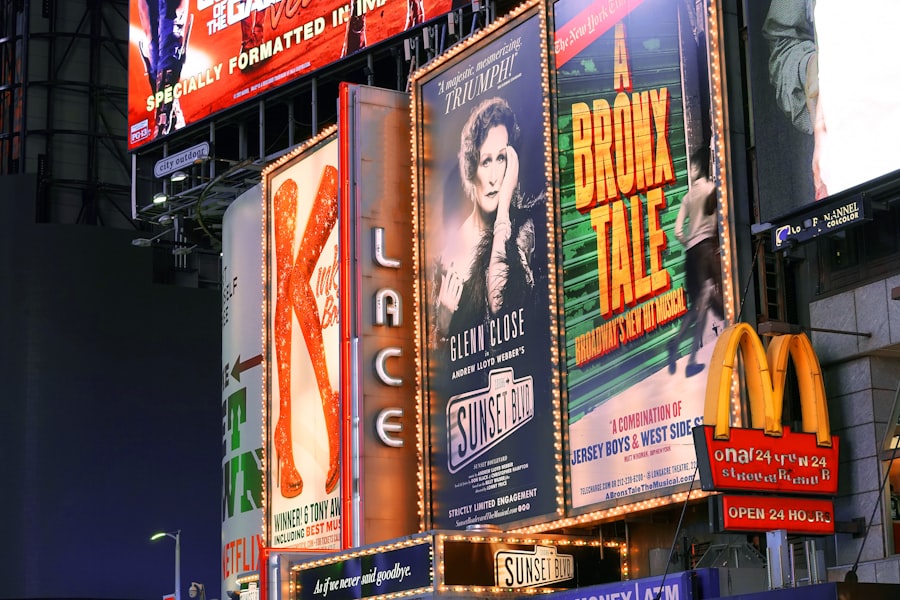The Kaiju genre, a captivating realm of cinema, invites you into a world where colossal creatures clash in epic battles, often leaving cities in ruins. Originating from Japan, the term “Kaiju” translates to “strange beast,” and it encompasses a variety of monstrous beings, from dinosaurs to mythical creatures. This genre is not merely about the spectacle of destruction; it delves into themes of humanity’s relationship with nature, the consequences of scientific hubris, and the struggle for survival in an increasingly chaotic world.
As you explore this genre, you will find that it resonates on multiple levels, offering both thrilling entertainment and profound commentary on societal issues. At its core, the Kaiju genre is a reflection of cultural anxieties and aspirations. The towering figures of these monsters often symbolize the fears of technological advancement and environmental degradation.
As you watch these titanic battles unfold, you may find yourself contemplating the fragility of human existence in the face of overwhelming forces. The genre has evolved over the decades, adapting to changing societal contexts while maintaining its foundational themes. Whether you are a long-time fan or a newcomer, the Kaiju genre promises an exhilarating experience that challenges your perceptions and ignites your imagination.
Key Takeaways
- Kaiju genre refers to Japanese monster films featuring giant creatures wreaking havoc on cities.
- Godzilla franchise began in 1954 with the release of the original film, spawning numerous sequels and spin-offs.
- Japanese Kaiju films have influenced Western culture, inspiring Hollywood to create their own monster movies.
- The making of Godzilla 2014 involved a modern reimagining of the iconic monster, blending practical effects with CGI.
- Godzilla 2014 had a significant impact on Western Kaiju fandom, revitalizing interest in the genre and paving the way for future films.
History of Godzilla Franchise
The Birth of a Cultural Icon
The original film’s haunting imagery and powerful themes resonated deeply with audiences, establishing Godzilla as a cultural icon that transcended borders. Over the years, the franchise has expanded to include numerous sequels, spin-offs, and reboots, each contributing to Godzilla’s legacy.
Transformations and Reflections
From the campy adventures of the Showa era to the darker tones of the Heisei series, Godzilla has undergone various transformations that reflect changing societal attitudes. Each iteration of Godzilla captures the zeitgeist of its time, whether it be through environmental concerns or reflections on war.
A Legacy of Entertainment and Provocation
As you explore this rich history, you will appreciate how Godzilla has not only entertained but also provoked thought and discussion across generations. The franchise’s ability to capture the essence of its time has cemented Godzilla’s place as a cultural phenomenon, ensuring its continued relevance and appeal.
Influence of Japanese Kaiju Films on Western Culture

The influence of Japanese Kaiju films on Western culture is profound and far-reaching. As you examine this impact, you will notice how these films have inspired countless filmmakers and artists in Hollywood and beyond. The visual spectacle and imaginative storytelling found in Kaiju films have led to a resurgence of interest in giant monster movies in the West.
You may recall iconic films like “King Kong” and “Jurassic Park,” which owe much to the groundwork laid by Japanese Kaiju cinema. Moreover, the themes explored in these films resonate with Western audiences as well. The fear of nature’s wrath, the consequences of unchecked technological advancement, and the struggle for survival are universal narratives that transcend cultural boundaries.
As you engage with these stories, you may find parallels between the struggles faced by Godzilla and those encountered in contemporary society. This cross-cultural exchange has enriched both Japanese and Western cinema, creating a dialogue that continues to evolve.
The Making of Godzilla 2014
| Aspect | Metric |
|---|---|
| Production Budget | 160 million |
| Box Office Revenue | 529.1 million |
| Runtime | 123 minutes |
| IMDb Rating | 6.4/10 |
The making of “Godzilla” (2014) marked a significant moment in the revival of the Kaiju genre for Western audiences. Directed by Gareth Edwards, this film sought to honor the legacy of its predecessors while introducing Godzilla to a new generation. As you explore the production process, you will discover how Edwards aimed to create a sense of realism and scale that would immerse viewers in the world of giant monsters.
The filmmakers meticulously crafted each scene to evoke awe and terror, ensuring that Godzilla’s presence felt both monumental and believable. One of the standout features of “Godzilla” (2014) is its emphasis on character development and emotional depth. Unlike many previous monster films that focused solely on action, this iteration sought to humanize its characters, allowing you to connect with their struggles and fears.
The film’s narrative weaves together personal stories against the backdrop of global catastrophe, creating a compelling juxtaposition that heightens the stakes. As you watch, you may find yourself invested not only in Godzilla’s journey but also in the lives of those caught in his path.
Impact of Godzilla 2014 on Western Kaiju Fandom
The release of “Godzilla” (2014) had a profound impact on Western Kaiju fandom, reigniting interest in giant monster films and inspiring a new wave of enthusiasts. As you engage with this fandom, you will notice how fans embraced the film’s blend of nostalgia and innovation. Many long-time followers appreciated the respectful nods to classic Godzilla films while welcoming fresh interpretations that modernized the franchise for contemporary audiences.
Social media played a crucial role in amplifying this resurgence. Fans took to platforms like Twitter and Instagram to share their excitement, theories, and artwork inspired by the film. You may find it fascinating how this digital landscape fostered a sense of community among fans who bonded over their shared love for Kaiju culture.
The success of “Godzilla” (2014) not only revitalized interest in Godzilla but also paved the way for future projects within the genre, solidifying its place in popular culture.
Godzilla 2014: Reimagining the Kaiju Genre

“Godzilla” (2014) represents a significant reimagining of the Kaiju genre, blending traditional elements with contemporary filmmaking techniques. As you watch this film, you will notice how it pays homage to its roots while pushing boundaries in terms of visual effects and storytelling. The filmmakers employed cutting-edge technology to create stunning visuals that bring Godzilla and other monsters to life in ways previously unimaginable.
Moreover, this reimagining emphasizes a more nuanced portrayal of Godzilla as a force of nature rather than merely a destructive monster. You may find it intriguing how the film explores themes of balance and coexistence between humanity and nature. Godzilla is depicted as both a threat and a protector, challenging your perceptions of what it means to be a monster.
This duality adds depth to the narrative, inviting you to reflect on your relationship with the natural world.
Critical Reception and Box Office Success
Upon its release, “Godzilla” (2014) garnered significant critical acclaim and commercial success, solidifying its status as a landmark film within the Kaiju genre. Critics praised its visual spectacle, atmospheric tension, and character-driven storytelling. As you delve into reviews and analyses, you will find that many appreciated how the film balanced action with emotional depth, creating a compelling narrative that resonated with audiences.
Box office numbers further underscored its success; “Godzilla” (2014) grossed over $500 million worldwide, demonstrating its widespread appeal. This financial triumph not only validated the filmmakers’ vision but also signaled a renewed interest in Kaiju films among studios and audiences alike. You may find it exciting how this success opened doors for future projects within the genre, paving the way for sequels and crossovers that continue to captivate fans around the globe.
Future of Western Kaiju Films
As you look ahead to the future of Western Kaiju films, there is an undeniable sense of anticipation surrounding what lies ahead for this beloved genre. The success of “Godzilla” (2014) has sparked renewed interest from studios eager to explore new narratives within this framework. Upcoming projects promise to expand upon established lore while introducing fresh concepts that challenge traditional notions of what a Kaiju film can be.
Moreover, collaborations between Western filmmakers and Japanese creators may lead to exciting cross-cultural exchanges that enrich both industries. You might find it thrilling to consider how these partnerships could result in innovative storytelling that honors the legacy of Kaiju cinema while pushing creative boundaries. As fans continue to engage with this genre through social media and conventions, their voices will undoubtedly shape its evolution in ways we can only begin to imagine.
In conclusion, the Kaiju genre remains a dynamic and evolving landscape that captivates audiences worldwide. From its origins with Godzilla to its resurgence in Western cinema, this genre continues to inspire creativity and provoke thought. As you immerse yourself in these stories, remember that each roar from these colossal creatures carries with it echoes of humanity’s hopes and fears—a reminder that even in our darkest moments, we can find strength in resilience and unity against overwhelming odds.
